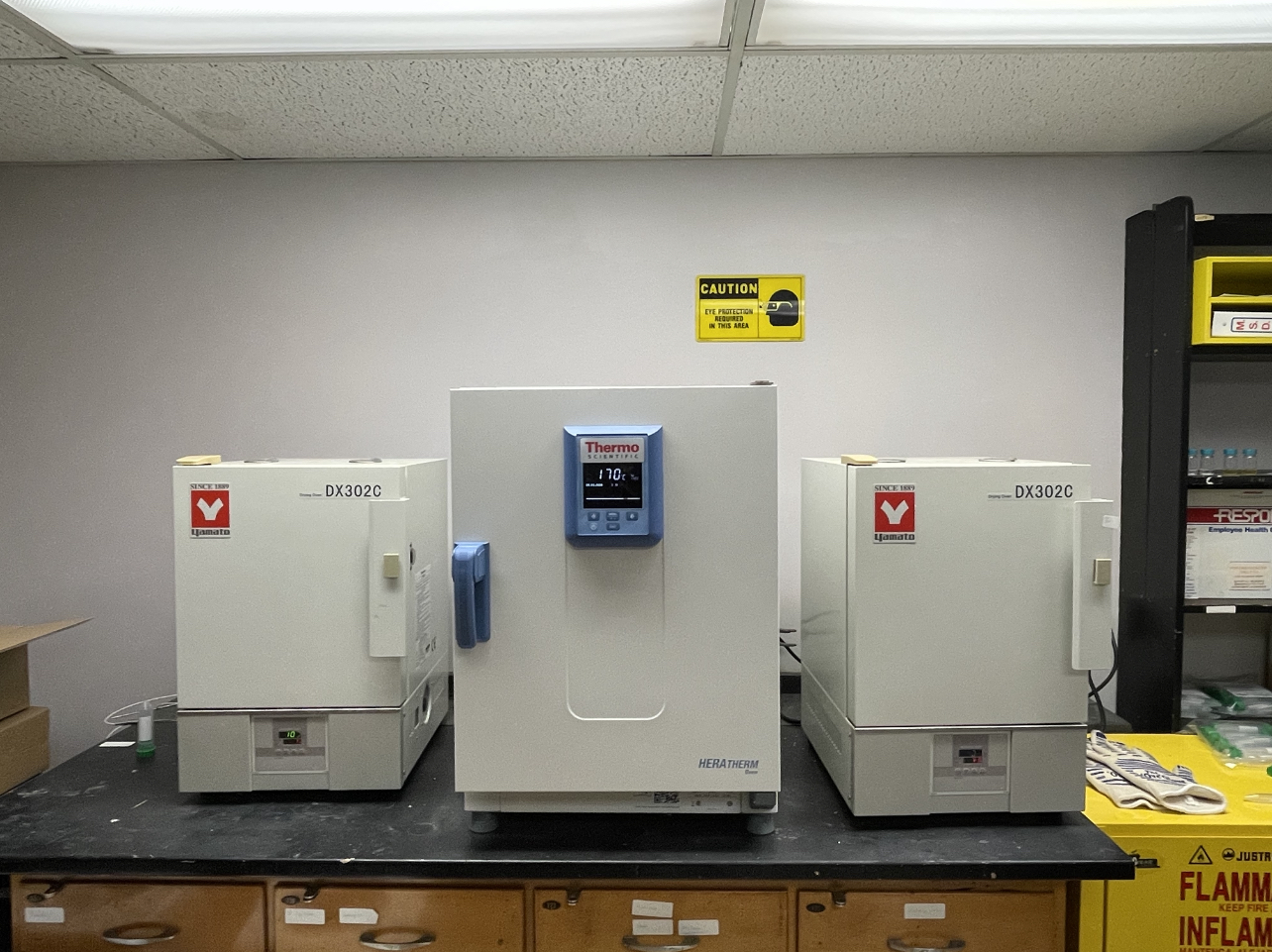By Christopher Gillett
Youngstown State University received the Early-Concept Grant for Exploratory Research from the National Science Foundation to fund research with the State University of New York at Albany into lithium-ion battery recycling.
Worth $300,000 over two years, the EAGER Award was split between YSU and SUNY, with $149,684 going to YSU. The research at YSU is overseen by Doug Genna, a professor of chemistry in the Department of Chemical and Biological Sciences.
Lithium-ion batteries are an important component of electronic devices and transportation.
Alongside lithium, these batteries sometimes contain other elements such as nickel, cobalt and manganese. When disposed of, pyrolyzed and ground up, lithium-ion batteries are formed into a “black mass” of all these metals, which can pollute the environment.
Genna and his students are researching ways to separate the lithium from the precious metals in the black mass, through metal-organic frameworks. MOFs are a polymer — or a chemical made up of a repeating building unit — which is porous, meaning it can hold different microscopic and nanoscopic components similarly to how sponges can hold water.
The difference is while sponges absorb, MOFs adsorb the components through adhesion.
Genna and his students’ research is trying to find a MOF for lithium adsorption.
“[Making] one ton of battery takes 800 tons of ore. If you could recycle a battery, it’s something like 20 tons of lithium-ion recycled will make one ton of new batteries. It becomes an economy of scale versus letting our batteries sit in a landfill somewhere,” Genna said.
According to Genna, lithium-ion recycling would lead to less dependence on international sources for lithium.
“We don’t have reserves for lithium. Most of that comes from China. So, we have to outsource all of our intake for that,” Genna said. “If we could develop a way to recycle lithium-ion batteries it would remove our dependence on international sources.”
Since August, Genna’s lab has also received $346,828 through the Research Undergraduate Institution Grant from the NSF to study MOFs.
According to Genna, grants like these are vital in supporting the research students do.
“[Grants] really allow us to do the business of research, which is not cheap. It’s expensive — especially in time. So, student’s time is precious, and if they’re the ones doing the bulk of the chemistry involved then we want to be able to compensate them for their time,” Genna said.
Genna said he views the research as a form of exploration.
“I view myself as a chemical cartographer — how do we get from [point] A to [point] B chemically? So, we know the start point and we know the end point. We don’t know the route in between. We don’t know all the things that happen,” Genna said.
Genna said he equates the feeling of exploring chemical compositions to exploring in open world video games.
“When you play any open world game, they start you in the middle of the map, and it’s always fogged around,” Genna said. “By the end of the game — It’s fully annotated, you’ve been to all the end points and you still don’t know how to get anywhere for the most part.”
According to Genna, helping students research is one of the best parts of his work.
“Most of the work is done by students in the lab and not by me. I’m the idea guy. I help also raise the money. I help them go over the results and brainstorm the experiments to run. But watching them blossom and grow is really the best part,” Genna said.


